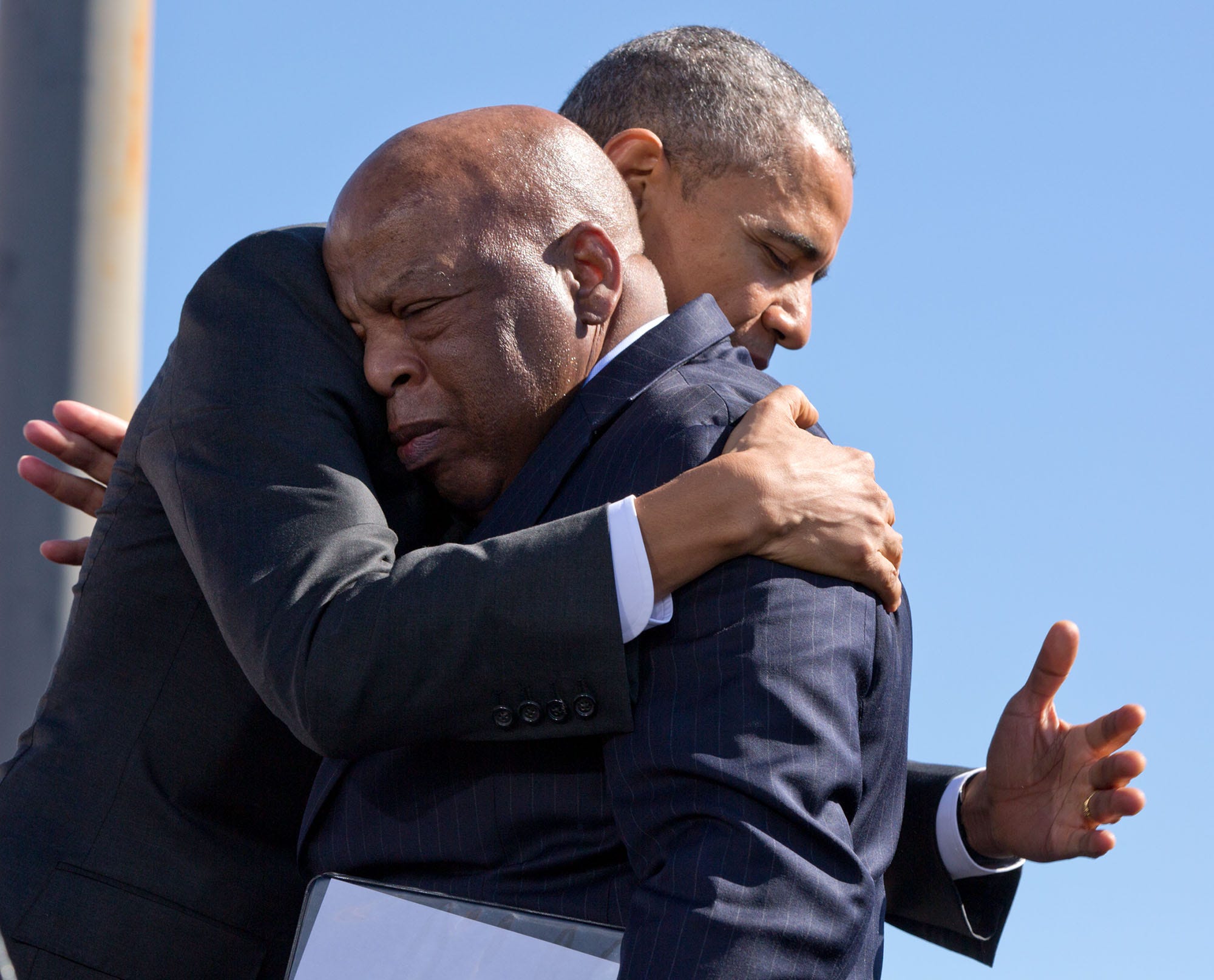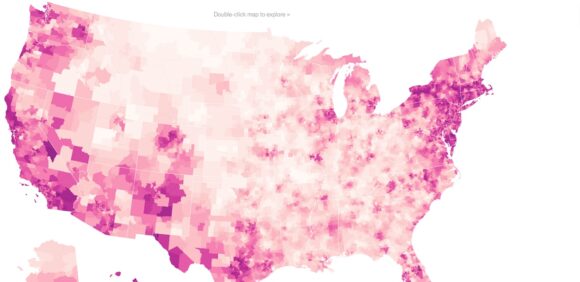
Dear Commons Community,
I was going to blog this morning about Anthony Fauci and the way Donald Trump and the White House have been treating him this past week. This culminated in a scathing op-ed article by President Trump’s trade adviser, Peter Navarro, that declared Dr. Fauci “wrong about everything”. It even caused a fissure within the White House with some Trump aides scrambling to disavow the attack on the most trusted public figure of the coronavirus crisis. However, this morning I came across a piece by New York Times columnist, Nicholas Kristof, where he comments that even with all of the gloom we have been experiencing, there is hope and light at the end of the tunnel. He reminds his readers that:
“Yes, our nation is a mess, but overlapping catastrophes have also created conditions that may finally let us extricate ourselves from the mire. The grim awareness of national failures — on the coronavirus, racism, health care and jobs — may be a necessary prelude to fixing our country.
The last time our economy was this troubled, Herbert Hoover’s failures led to Franklin D. Roosevelt’s election with a mandate to revitalize the nation. The result was the New Deal, Social Security, rural electrification, government jobs programs and a 35-year burst of inclusive growth that built the modern middle class and arguably made the United States the richest and most powerful country in the history of the world.”
Yes, let’s hope. Below is Kristof’s entire column.
Tony
———————————————————————
We Interrupt This Gloom to Offer … Hope!
Nicholas Kristof
July 16, 2020
Just one in six Americans in a poll last month was “proud” of the state of the country, and about two out of three were actually “fearful” about it. So let me introduce a new thought: “hope.”
Yes, our nation is a mess, but overlapping catastrophes have also created conditions that may finally let us extricate ourselves from the mire. The grim awareness of national failures — on the coronavirus, racism, health care and jobs — may be a necessary prelude to fixing our country.
The last time our economy was this troubled, Herbert Hoover’s failures led to Franklin D. Roosevelt’s election with a mandate to revitalize the nation. The result was the New Deal, Social Security, rural electrification, government jobs programs and a 35-year burst of inclusive growth that built the modern middle class and arguably made the United States the richest and most powerful country in the history of the world.
History doesn’t repeat, but it does rhyme. And when I reached out through the gloom to consult experts, I was struck by how much hope I heard.
“On balance, I am very hopeful and I’m very optimistic,” Darren Walker, the president of the Ford Foundation, told me. “What we’re seeing today is a sort of national convulsion over the recognition that racism in America is real and it’s not a figment of the imagination of Black people in this country.”
Marian Wright Edelman, the founder of the Children’s Defense Fund, who for six decades has been battling for a more just society, told me, “I’m very optimistic. I think we have a chance of getting something done.”
Like others I spoke with, she said that one reason for hope is, paradoxically, President Trump and the way he has become the avatar of failed “let them eat cake” policies and narratives. “Mr. Trump is the perfect opposition to have,” Edelman said. “He represents the implosion of the American dream, and we can’t go down his road much farther.”
“If we can’t get something done now,” she added, “then shame on us.”
Betting markets like PredictIt expect Joe Biden to sweep into the presidency in January with a Democratic House and a Democratic Senate. By then we may have lost a quarter million Americans to Covid-19 and remain mired in the worst economic downturn of our lifetimes, with racial antagonisms inflamed by a president whom a majority of Americans regard as a racist. I’ve known Biden since he was a senator, and he’s no radical — but that reassuring, boring mien may make it easier to win a mandate and then use it to pivot the United States onto a new path.
So perhaps today’s national pain, fear and loss can also be a source of hope: We may be so desperate, our failures so manifest, our grief so raw, that the United States can once more, as during the Great Depression, embrace long-needed changes that would have been impossible in cheerier times.
The United States faces at least three simultaneous crises: more coronavirus deaths than any other country, the worst economic slump since the Great Depression and overflowing outrage over racial inequity. Yet these crises are all interlinked, all facets of the same core failure of our country, one that has its roots in President Richard Nixon’s “Southern strategy” of 1968 and in the racialization of social safety net programs thereafter.
Why is the United States just about the only advanced country to lack universal health care? Without universal paid sick leave?
Many scholars, in particular the late Alberto Alesina, a Harvard economist, have argued that one reason for America’s outlier status is race. Investing in safety nets and human capital became stigmatized because of a perception that African-Americans would benefit. So instead of investing in children, we invested in a personal responsibility narrative holding that Americans just need to lift themselves up by their bootstraps to get ahead.
This experiment proved catastrophic for all Americans, especially the working class. Marginalized groups, including African-Americans and Native Americans, suffered the worst, but the underinvestment in health and the lack of safety nets meant that American children today are 57 percent more likely to die by age 19 than European children are.
This boomerang effect of obdurate white racism — what Dr. Jonathan M. Metzl calls “dying of whiteness” — means that Americans now are less likely to graduate from high school than children in many peer countries. Meanwhile, people die in the United States from drug overdoses at a rate of one every seven minutes.
Nicholas Kristof’s Newsletter: Get a behind-the-scenes look at Nick’s gritty journalism as he travels around the United States and the world.
This is deeply personal to me. As I’ve written in a recent book, “Tightrope,” a quarter of the children on my old No. 6 school bus in rural Yamhill, Ore., are dead from drugs, alcohol and suicide — deaths of despair. Others are homeless or in prison. Although they were white, they perished because of policy choices, partly rooted in racism, that the United States has pursued for 50 years.
Gaps in safety nets left us in turn particularly vulnerable to a pandemic, for underinsurance and lack of paid sick leave helped spread the coronavirus. The pandemic then caused people to lose their jobs, which in the United States meant that they lost health insurance just when it was most needed. Trump bungled the pandemic, as did some local leaders, but the failure was also 50 years in the making.
Do we now have a chance for a reset? Yes, I think we do.
It may already have been in the works. Kansas Republicans rebelled against tax cuts that had devastated schools. Texas helped lead the way in reversing mass incarceration. Red states like Idaho, Utah and Oklahoma expanded Medicaid.
To the extent that America’s 50 years of failures had their roots in racism, it’s also striking that the new possibilities arise in part from mass revulsion at a short video that showed the undeniable truth of racism today.
In 1899, W.E.B. Du Bois, writing about racial injustice, said there have “been few other cases in the history of civilized people where human suffering has been viewed with such peculiar indifference.” Yet maybe the video of George Floyd’s life being snuffed out by police officers is dispelling that indifference. The current Black Lives Matter protests, measured by the number of participants (roughly 20 million), appear to constitute the largest movement in American history.
“There was something about seeing a man’s knee on another man’s neck that woke people up,” said Helene Gayle, the chief executive of the Chicago Community Trust. “People think I’m crazy, but I have a sense of possibility.”
The polling is striking. Sixty percent of Americans, including a majority of white people, said in a CBS News poll last month that they support ideas promoted by the Black Lives Matter movement. Almost as large a majority supports a national health care plan. An astonishing 89 percent favor higher taxes on the rich to reduce poverty in America.
The Majority
Despite some vocal opposition, many sensible positions enjoy broad support among Americans.

The sense of opportunity thus is emerging not solely from the wreckage of past policies but also from new attitudes, particularly among young people. Half a century ago, there was something to Nixon’s claim of a “silent majority” that backed his racist dog whistles; today, polls indicate, the silent majority want more spending to address racial inequity, more effort to address climate change and more input from scientists on how to handle Covid-19.
It’s not clear, of course, that these views will translate into wiser policies. Congress is often more responsive to wealthy donors than to voter opinions. And while white Americans may chant “Black Lives Matter,” they may not want to back policies to share the bounty that they have been hogging; few are talking about fixing our unequal system of local school funding built to transmit advantage from one generation to the next.
Yet this inchoate movement is gaining ground, and Trump is on the defensive. In the rural Oregon town where I grew up, most people voted for Trump in 2016, and until early this year they stuck with him because they liked his nominations of conservative judges and his pro-gun stance, but most of all they liked the roaring economy. Now the collapsing economy and Trump’s manifest failures in managing the pandemic test that support.
In the 1930s the unequivocal nature of Hoover’s failures helped win Roosevelt his mandate and made the New Deal possible. Maybe national anguish can again be the midwife of progress.
“It is possible that the best thing that could have happened to make progressive change possible is the crass, self-interested, ineffective politics of Donald Trump,” Lizabeth Cohen, a Harvard historian, told me.
But wait! Even if Biden wins with both chambers of Congress — a huge if — this is an age of toxic polarization. Republican senators will filibuster (if the filibuster survives), conservative judges will overturn Biden executive orders, and Tucker Carlson and Sean Hannity will spew venom.
Actually, that sounds rather like the 1930s. Roosevelt was (initially) blocked by the Supreme Court, and fervently denounced by Father Charles Coughlin on the right and Senator Huey Long on the left. F.D.R. was regularly accused of being a “warmonger” and a “fascist dictator,” or of taking America on the road to Communism. He didn’t even have the full backing of his wife, Eleanor (history vindicated her on most of their disagreements, such as anti-lynching legislation that she supported and the internment of Japanese-Americans that she opposed).
Skeptics worry that Trump has permanently damaged American institutions and norms, in ways that will impair future progress. Perhaps. But Nixon likewise challenged institutions, norms and the rule of law, and the result was that Americans came to value them more. One result was the Democratic tidal wave of 1974.
Like Trump, Nixon took on journalists — his vice president, Spiro Agnew, excoriated critics as “nattering nabobs of negativism” — but ultimately Agnew was convicted of a felony, and Bob Woodward and Carl Bernstein inspired a generation of kids to become journalists. Me included.
I often hear Americans say that our country has never been so divided. That doesn’t ring true. Far more than today, households in the 1960s were riven by civil warfare, with children denouncing parents as murderers for supporting the Vietnam War and parents despairing of their offspring as immoral, impractical good-for-nothings who lived in sin, smoked pot and threatened the nation’s future. If we survived the chasms of the ’60s, we can get through this.
“I know we will see a better future,” President Jimmy Carter told me recently. “We have been through many painful crises, some spanning years, but we have always gotten back on our feet. Sometimes there must be a reckoning and course correction.”
I reached out to Carter because his administration in the late 1970s roughly marked the end of the postwar cycle of inclusive capitalism. At age 95, he’s still guardedly optimistic, as is Walter Mondale, his vice president, a classic liberal who at age 92 — “not too many more years, and I’ll be getting old,” he told me — said he feels “a lot of hope.”
History does not unfold smoothly; policies do not “evolve” gradually. Rather, they develop, like animal species, through what evolutionary biologists call “punctuated equilibrium” — long periods of stasis and short bouts of intense variation. The change is often driven by traumas, like the American Revolution or the Great Depression.
Roosevelt was a somewhat conventional, privileged figure who seized upon the catastrophe of the Depression to transform America. Lyndon B. Johnson was a corrupt and manipulative Southern politician who seized upon the Kennedy assassination to pass civil rights legislation and the Great Society programs.
“F.D.R. wasn’t by nature a revolutionary, but out of the trauma of the Great Depression he helped unleash a revolution that made America a richer, fairer and better country,” said Cohen. “The same is possible again — if we get everything right.”
Covid-19 and the Black Lives Matter movement, along with a broad recognition that America has taken a wrong path, create a similar opportunity for Joe Biden. While Biden isn’t charismatic, he’s a reassuring veteran who knows how the system works and doesn’t frighten voters — and who thus has a chance, like F.D.R., to be elected with a mandate and make history.
Some of Biden’s aides are telling him to think in such grand terms, and he seems drawn to the idea. “I do think we’ve reached a point, a real inflection in American history,” he told reporters a few days ago. “And I don’t believe it’s unlike what Roosevelt was met with.”
Biden added that “we have an opportunity to make some really systemic change,” but for now his policy positions don’t show much sign of that. He is likely to favor a public option as a path to universal health coverage, stronger moves on climate change, a higher federal minimum wage, easier access to college, and jobs programs to reduce inequality. If enacted, these would put America on a path more like that of Europe and Canada, but they would be short of Rooseveltian.
Add a universal child care/pre-K program modeled on the military’s, universal dental coverage, Canada-style child allowances to cut child poverty in half, major investments in K-12 education for disadvantaged children, “baby bonds” to reduce wealth inequality, greater union protections and “bandwidth for all” — then you are talking history.
Is that a pipe dream? Perhaps. But a series of national crises may have exposed our failings enough to give us a chance at a do-over.
This hope is not Pollyannaish. It rests on a tragic toll of Covid-19 deaths, and it requires a thousand caveats. Trump might win in November. If Biden wins, a Republican Senate might stymie his proposals and block his nominees. Deficits are now so enormous that politics may become a dispiriting fight about which programs to cut, not which dreams to finance. Veteran liberals are scarred by memories of unfulfilled hope that followed Barack Obama’s election in 2008, Bill Clinton’s in 1992, Jimmy Carter’s in 1976: Hope is the engine oil of campaigns, but it burns up in the heat of governing.
And yet.
“Hope right now in America is bloodied and battered, but this is the kind of hope that is successful,” said Senator Cory Booker, Democrat of New Jersey. “It’s hope that has lost its naïveté.”
Besieged as we are by plague and crisis, a dollop of this “calloused hope,” as Booker calls it, offers an incentive to persevere. If in the depths of the Great Depression we could claw a path out and forge a better country, “calloused hope” can guide us once more to a better place.











